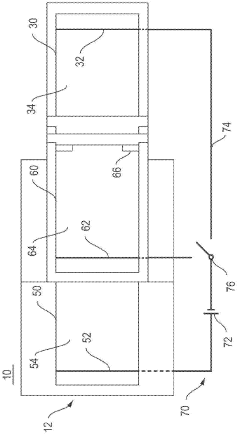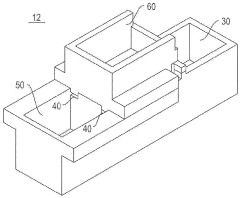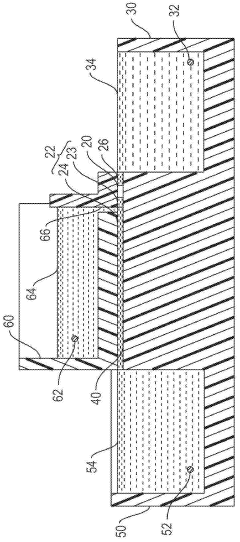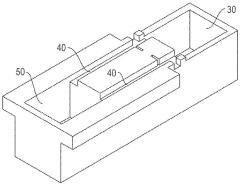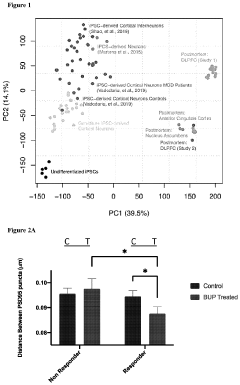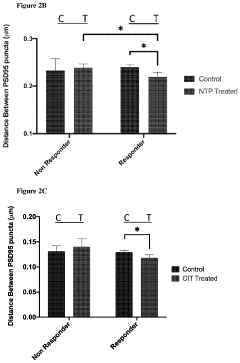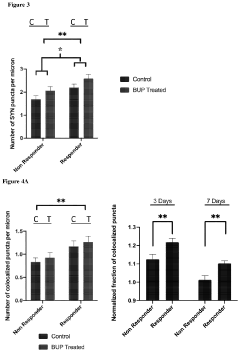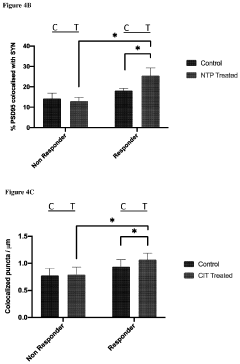How Does Gel Electrophoresis Support Personalized Medicine?
JUN 30, 20259 MIN READ
Generate Your Research Report Instantly with AI Agent
Patsnap Eureka helps you evaluate technical feasibility & market potential.
Gel Electrophoresis in Personalized Medicine: Overview
Gel electrophoresis has emerged as a cornerstone technique in the rapidly evolving field of personalized medicine. This powerful analytical method separates molecules based on their size and electrical charge, providing crucial insights into genetic variations and protein profiles. In the context of personalized medicine, gel electrophoresis plays a pivotal role in genomic and proteomic analyses, enabling healthcare professionals to tailor medical treatments to individual patients.
The technique's ability to separate DNA fragments, RNA molecules, and proteins with high resolution makes it an invaluable tool for identifying genetic markers associated with diseases, drug responses, and individual health risks. By analyzing the unique patterns produced through gel electrophoresis, researchers and clinicians can detect mutations, polymorphisms, and other genetic variations that influence an individual's susceptibility to certain conditions or their likelihood of responding to specific treatments.
In genomic applications, gel electrophoresis supports personalized medicine by facilitating the identification of single nucleotide polymorphisms (SNPs), copy number variations (CNVs), and other genetic alterations. These insights are crucial for developing targeted therapies and predicting disease risk. For instance, in cancer genomics, gel electrophoresis helps in detecting gene amplifications or deletions that may influence tumor behavior and treatment response.
Proteomic analysis through gel electrophoresis, particularly two-dimensional gel electrophoresis, allows for the comprehensive study of protein expression patterns. This capability is essential in identifying biomarkers for various diseases and in monitoring treatment efficacy at the molecular level. By comparing protein profiles between healthy and diseased states, researchers can uncover potential therapeutic targets and develop personalized treatment strategies.
The integration of gel electrophoresis with other advanced technologies, such as mass spectrometry and next-generation sequencing, has further enhanced its utility in personalized medicine. These combined approaches provide a more comprehensive view of an individual's genetic and proteomic landscape, enabling more precise diagnoses and treatment plans.
As personalized medicine continues to advance, gel electrophoresis remains a fundamental technique for analyzing biological molecules. Its versatility, reliability, and ability to provide detailed molecular information make it an indispensable tool in the quest to tailor medical care to each patient's unique genetic and proteomic profile. The ongoing refinement of gel electrophoresis techniques and their integration with other analytical methods promise to further enhance the precision and effectiveness of personalized medical approaches in the future.
The technique's ability to separate DNA fragments, RNA molecules, and proteins with high resolution makes it an invaluable tool for identifying genetic markers associated with diseases, drug responses, and individual health risks. By analyzing the unique patterns produced through gel electrophoresis, researchers and clinicians can detect mutations, polymorphisms, and other genetic variations that influence an individual's susceptibility to certain conditions or their likelihood of responding to specific treatments.
In genomic applications, gel electrophoresis supports personalized medicine by facilitating the identification of single nucleotide polymorphisms (SNPs), copy number variations (CNVs), and other genetic alterations. These insights are crucial for developing targeted therapies and predicting disease risk. For instance, in cancer genomics, gel electrophoresis helps in detecting gene amplifications or deletions that may influence tumor behavior and treatment response.
Proteomic analysis through gel electrophoresis, particularly two-dimensional gel electrophoresis, allows for the comprehensive study of protein expression patterns. This capability is essential in identifying biomarkers for various diseases and in monitoring treatment efficacy at the molecular level. By comparing protein profiles between healthy and diseased states, researchers can uncover potential therapeutic targets and develop personalized treatment strategies.
The integration of gel electrophoresis with other advanced technologies, such as mass spectrometry and next-generation sequencing, has further enhanced its utility in personalized medicine. These combined approaches provide a more comprehensive view of an individual's genetic and proteomic landscape, enabling more precise diagnoses and treatment plans.
As personalized medicine continues to advance, gel electrophoresis remains a fundamental technique for analyzing biological molecules. Its versatility, reliability, and ability to provide detailed molecular information make it an indispensable tool in the quest to tailor medical care to each patient's unique genetic and proteomic profile. The ongoing refinement of gel electrophoresis techniques and their integration with other analytical methods promise to further enhance the precision and effectiveness of personalized medical approaches in the future.
Market Demand for Precision Diagnostics
The market demand for precision diagnostics has been experiencing significant growth in recent years, driven by the increasing focus on personalized medicine and the need for more accurate and targeted healthcare solutions. Gel electrophoresis, as a fundamental technique in molecular biology, plays a crucial role in supporting this demand by enabling the separation and analysis of DNA, RNA, and proteins.
In the context of personalized medicine, precision diagnostics are essential for identifying genetic variations, biomarkers, and disease-specific molecular signatures. This information allows healthcare providers to tailor treatments to individual patients, improving therapeutic outcomes and reducing adverse effects. The global precision medicine market, which heavily relies on diagnostic technologies like gel electrophoresis, is projected to expand rapidly in the coming years.
One of the key drivers of market demand for precision diagnostics is the rising prevalence of chronic diseases, such as cancer, cardiovascular disorders, and neurological conditions. These complex diseases often require personalized treatment approaches based on an individual's genetic makeup and molecular profile. Gel electrophoresis enables the detection and characterization of disease-associated genetic mutations and protein abnormalities, making it an indispensable tool in precision diagnostics.
The aging population worldwide is another factor contributing to the increased demand for precision diagnostics. As people live longer, there is a growing need for more effective and targeted healthcare interventions. Gel electrophoresis-based diagnostic tests can help identify age-related genetic changes and biomarkers, allowing for early detection and personalized management of age-associated diseases.
Advancements in genomic and proteomic technologies have also fueled the demand for precision diagnostics. Next-generation sequencing and high-throughput proteomics rely on gel electrophoresis for sample preparation and quality control. These technologies generate vast amounts of molecular data, which can be used to develop more accurate diagnostic tests and personalized treatment strategies.
The pharmaceutical industry is another major driver of market demand for precision diagnostics. Drug developers are increasingly adopting personalized medicine approaches to improve clinical trial success rates and develop targeted therapies. Gel electrophoresis is used in various stages of drug development, from target identification to patient stratification in clinical trials, supporting the growing demand for companion diagnostics.
As healthcare systems worldwide shift towards value-based care models, there is a growing emphasis on cost-effective and efficient diagnostic solutions. Gel electrophoresis-based tests offer a balance between accuracy and affordability, making them attractive for both healthcare providers and patients. This trend is expected to further drive the demand for precision diagnostic technologies in the coming years.
In the context of personalized medicine, precision diagnostics are essential for identifying genetic variations, biomarkers, and disease-specific molecular signatures. This information allows healthcare providers to tailor treatments to individual patients, improving therapeutic outcomes and reducing adverse effects. The global precision medicine market, which heavily relies on diagnostic technologies like gel electrophoresis, is projected to expand rapidly in the coming years.
One of the key drivers of market demand for precision diagnostics is the rising prevalence of chronic diseases, such as cancer, cardiovascular disorders, and neurological conditions. These complex diseases often require personalized treatment approaches based on an individual's genetic makeup and molecular profile. Gel electrophoresis enables the detection and characterization of disease-associated genetic mutations and protein abnormalities, making it an indispensable tool in precision diagnostics.
The aging population worldwide is another factor contributing to the increased demand for precision diagnostics. As people live longer, there is a growing need for more effective and targeted healthcare interventions. Gel electrophoresis-based diagnostic tests can help identify age-related genetic changes and biomarkers, allowing for early detection and personalized management of age-associated diseases.
Advancements in genomic and proteomic technologies have also fueled the demand for precision diagnostics. Next-generation sequencing and high-throughput proteomics rely on gel electrophoresis for sample preparation and quality control. These technologies generate vast amounts of molecular data, which can be used to develop more accurate diagnostic tests and personalized treatment strategies.
The pharmaceutical industry is another major driver of market demand for precision diagnostics. Drug developers are increasingly adopting personalized medicine approaches to improve clinical trial success rates and develop targeted therapies. Gel electrophoresis is used in various stages of drug development, from target identification to patient stratification in clinical trials, supporting the growing demand for companion diagnostics.
As healthcare systems worldwide shift towards value-based care models, there is a growing emphasis on cost-effective and efficient diagnostic solutions. Gel electrophoresis-based tests offer a balance between accuracy and affordability, making them attractive for both healthcare providers and patients. This trend is expected to further drive the demand for precision diagnostic technologies in the coming years.
Current Challenges in Gel Electrophoresis Techniques
Gel electrophoresis, while a powerful technique in personalized medicine, faces several challenges that limit its full potential. One of the primary issues is the lack of standardization across laboratories and institutions. Different protocols, equipment, and reagents can lead to variations in results, making it difficult to compare data from different sources. This inconsistency hampers the ability to establish reliable biomarkers and diagnostic criteria for personalized medicine applications.
Another significant challenge is the limited resolution and sensitivity of traditional gel electrophoresis methods. As personalized medicine often requires the detection of subtle genetic variations or low-abundance biomarkers, the inability to resolve closely spaced DNA fragments or detect minute quantities of proteins can be a major drawback. This limitation is particularly problematic when dealing with complex biological samples or when attempting to identify rare genetic mutations.
The time-consuming nature of gel electrophoresis techniques also poses a challenge in the fast-paced field of personalized medicine. Sample preparation, gel casting, running times, and post-electrophoresis analysis can take several hours to days, which may not be suitable for rapid diagnostic needs or high-throughput screening applications. This extended timeframe can delay critical treatment decisions and limit the technique's applicability in point-of-care settings.
Reproducibility is another concern in gel electrophoresis. Factors such as gel composition, buffer conditions, and environmental variables can affect the migration of molecules, leading to inconsistent results between runs. This variability can complicate the interpretation of results and reduce confidence in diagnostic or prognostic assessments based on gel electrophoresis data.
The qualitative nature of traditional gel electrophoresis also presents challenges in personalized medicine, where quantitative data is often crucial. While densitometry can provide semi-quantitative analysis, it may not offer the precision required for accurate biomarker quantification or gene expression profiling. This limitation can hinder the development of precise, personalized treatment strategies.
Automation and integration with other analytical techniques remain challenging for gel electrophoresis. Unlike some modern high-throughput methods, gel electrophoresis often requires manual intervention at various stages, making it less amenable to full automation. This can lead to increased labor costs and potential human errors, as well as difficulties in integrating gel electrophoresis data with other omics datasets crucial for comprehensive personalized medicine approaches.
Lastly, the analysis and interpretation of gel electrophoresis results can be subjective and require significant expertise. This reliance on skilled personnel can lead to inter-observer variability and potential misinterpretation of results, which is particularly problematic in the context of personalized medicine where treatment decisions may hinge on these analyses.
Another significant challenge is the limited resolution and sensitivity of traditional gel electrophoresis methods. As personalized medicine often requires the detection of subtle genetic variations or low-abundance biomarkers, the inability to resolve closely spaced DNA fragments or detect minute quantities of proteins can be a major drawback. This limitation is particularly problematic when dealing with complex biological samples or when attempting to identify rare genetic mutations.
The time-consuming nature of gel electrophoresis techniques also poses a challenge in the fast-paced field of personalized medicine. Sample preparation, gel casting, running times, and post-electrophoresis analysis can take several hours to days, which may not be suitable for rapid diagnostic needs or high-throughput screening applications. This extended timeframe can delay critical treatment decisions and limit the technique's applicability in point-of-care settings.
Reproducibility is another concern in gel electrophoresis. Factors such as gel composition, buffer conditions, and environmental variables can affect the migration of molecules, leading to inconsistent results between runs. This variability can complicate the interpretation of results and reduce confidence in diagnostic or prognostic assessments based on gel electrophoresis data.
The qualitative nature of traditional gel electrophoresis also presents challenges in personalized medicine, where quantitative data is often crucial. While densitometry can provide semi-quantitative analysis, it may not offer the precision required for accurate biomarker quantification or gene expression profiling. This limitation can hinder the development of precise, personalized treatment strategies.
Automation and integration with other analytical techniques remain challenging for gel electrophoresis. Unlike some modern high-throughput methods, gel electrophoresis often requires manual intervention at various stages, making it less amenable to full automation. This can lead to increased labor costs and potential human errors, as well as difficulties in integrating gel electrophoresis data with other omics datasets crucial for comprehensive personalized medicine approaches.
Lastly, the analysis and interpretation of gel electrophoresis results can be subjective and require significant expertise. This reliance on skilled personnel can lead to inter-observer variability and potential misinterpretation of results, which is particularly problematic in the context of personalized medicine where treatment decisions may hinge on these analyses.
Existing Gel Electrophoresis Applications in Personalized Medicine
01 Gel composition and preparation
Various gel compositions and preparation methods are used in gel electrophoresis. These include specific formulations of agarose, polyacrylamide, or other polymers to create gels with desired properties for different applications. The composition and preparation of the gel can significantly affect the separation and resolution of molecules during electrophoresis.- Gel composition and preparation: Various gel compositions and preparation methods are used in gel electrophoresis. These include specific formulations of agarose, polyacrylamide, or other polymers to create gels with desired properties for separation of molecules. The composition and preparation of the gel can significantly affect the resolution and efficiency of the electrophoresis process.
- Electrophoresis apparatus design: Innovations in the design of electrophoresis apparatus focus on improving efficiency, reproducibility, and ease of use. These designs may include features such as integrated cooling systems, adjustable voltage controls, and specialized sample loading mechanisms. Some apparatus designs also incorporate automated systems for gel casting, running, and analysis.
- Sample preparation and loading techniques: Advancements in sample preparation and loading techniques aim to improve the accuracy and resolution of gel electrophoresis. These may include methods for concentrating samples, removing interfering substances, or adding markers for size or charge comparisons. Specialized loading techniques can help achieve more uniform sample distribution and prevent sample diffusion.
- Detection and analysis methods: Various detection and analysis methods are employed in gel electrophoresis to visualize and quantify separated molecules. These may include staining techniques, fluorescent labeling, or the use of specialized imaging equipment. Advanced analysis methods often incorporate computer-assisted image processing and data interpretation to enhance accuracy and reproducibility.
- Specialized applications and modifications: Gel electrophoresis techniques have been adapted for specialized applications in various fields such as proteomics, genomics, and forensics. These modifications may involve changes in gel composition, running conditions, or detection methods to optimize separation and analysis of specific types of molecules or to address particular research questions.
02 Electrophoresis apparatus design
Innovations in electrophoresis apparatus design focus on improving efficiency, reproducibility, and ease of use. These designs may include novel electrode configurations, buffer circulation systems, or temperature control mechanisms. Some apparatus designs also incorporate features for automated sample loading or real-time monitoring of the electrophoresis process.Expand Specific Solutions03 Detection and analysis methods
Advanced detection and analysis methods are developed to enhance the sensitivity and accuracy of gel electrophoresis results. These may include fluorescence-based detection systems, image analysis software, or integration with mass spectrometry. Some methods focus on real-time monitoring of molecule migration or quantitative analysis of band intensities.Expand Specific Solutions04 Sample preparation techniques
Improved sample preparation techniques are crucial for obtaining high-quality results in gel electrophoresis. These may include methods for concentrating samples, removing interfering substances, or labeling molecules for better detection. Some techniques focus on preserving the native state of proteins or other biomolecules during sample preparation.Expand Specific Solutions05 Specialized applications
Gel electrophoresis techniques are adapted for specialized applications in various fields. These may include methods for separating specific types of molecules, such as nucleic acids or proteins, or techniques optimized for particular research areas like forensics or clinical diagnostics. Some applications focus on miniaturization or integration with other analytical techniques.Expand Specific Solutions
Key Players in Electrophoresis Technology
Gel electrophoresis plays a crucial role in advancing personalized medicine by enabling precise DNA analysis and protein separation. The technology's market is in a growth phase, with increasing applications in genomics and proteomics. The global market size for gel electrophoresis is projected to reach several billion dollars by 2025. Companies like Agilent Technologies, Life Technologies, and Bio-Rad Laboratories are leading players, offering advanced systems and consumables. Academic institutions such as the University of Maryland and Jilin University are contributing to research and development in this field. The technology's maturity is evolving, with ongoing innovations in high-throughput systems and microfluidic devices enhancing its capabilities for personalized medicine applications.
University of Maryland
Technical Solution: The University of Maryland has made notable advancements in gel electrophoresis techniques supporting personalized medicine. Their researchers have developed novel microfluidic devices that integrate gel electrophoresis with other analytical techniques, allowing for multi-parameter analysis of biological samples[8]. This approach enables simultaneous assessment of genetic, proteomic, and metabolomic markers, providing a more comprehensive view of an individual's health status. The university has also pioneered the use of stimuli-responsive hydrogels in electrophoresis, which can be tuned to separate specific biomolecules with high precision[9]. These innovations enhance the ability to detect and characterize biomarkers relevant to personalized medicine, potentially improving diagnostic accuracy and treatment selection.
Strengths: Innovative integration of multiple analytical techniques, potential for highly specific biomolecule separation. Weaknesses: Complex systems may require specialized expertise for implementation in clinical settings.
The Regents of the University of California
Technical Solution: The University of California system has made significant contributions to gel electrophoresis techniques supporting personalized medicine. Researchers have developed novel approaches such as microfluidic gel electrophoresis devices for rapid, high-resolution separation of biomolecules[5]. These miniaturized systems allow for analysis of minute sample volumes, crucial for applications like circulating tumor cell detection. The university has also pioneered advancements in two-dimensional gel electrophoresis for proteomics, enabling comprehensive protein profiling in disease states[6]. Additionally, UC researchers have developed specialized gel electrophoresis techniques for the separation and characterization of extracellular vesicles, which are emerging as important biomarkers in personalized medicine[7].
Strengths: Cutting-edge research, interdisciplinary approach, and focus on translational applications. Weaknesses: Some technologies may be in early stages of development and not yet commercially available.
Innovations in High-Resolution Gel Electrophoresis
Gel electrophoresis apparatus and gel electrophoresis method
PatentWO2015133190A1
Innovation
- A gel electrophoresis apparatus and method that includes a well for whole blood, with a power supply system to switch voltage application between electrodes, allowing electrophoresis to resume by switching from the first and second electrodes to the second and third electrodes, preventing blood cells from accumulating in the electrophoretic gel and maintaining the energizing function of the second and third electrodes.
Methods of therapeutic prognostication
PatentPendingUS20230094922A1
Innovation
- A method involving the assessment of neuronal cells derived from non-neuronal cells for specific biomarkers such as post-synaptic puncta perimeter length, pre-synaptic puncta number, and gene expression to determine suitability for therapeutic agents like Bupropion, Mirtazapine, and Citalopram, using induced pluripotent stem cells and microscopy analysis.
Regulatory Framework for Diagnostic Technologies
The regulatory framework for diagnostic technologies plays a crucial role in ensuring the safety, efficacy, and ethical use of gel electrophoresis in personalized medicine. In the United States, the Food and Drug Administration (FDA) oversees the regulation of diagnostic tests, including those utilizing gel electrophoresis techniques.
The FDA classifies diagnostic tests into different categories based on their intended use and risk level. Gel electrophoresis-based tests for personalized medicine often fall under the category of in vitro diagnostic devices (IVDs). These tests are subject to premarket review processes, which may include 510(k) clearance, de novo classification, or premarket approval (PMA), depending on their novelty and risk profile.
Quality control and assurance measures are essential components of the regulatory framework. Manufacturers must adhere to Good Manufacturing Practices (GMP) and implement robust quality management systems to ensure consistent and reliable test results. This includes regular calibration of equipment, validation of test procedures, and ongoing monitoring of test performance.
Clinical validity and utility are key considerations in the regulatory process. Manufacturers must provide substantial evidence demonstrating that their gel electrophoresis-based tests can accurately identify genetic variations and that the results are clinically meaningful for personalized medicine applications.
The regulatory landscape also addresses the ethical implications of genetic testing. Privacy and confidentiality of genetic information are paramount, and regulations such as the Genetic Information Nondiscrimination Act (GINA) in the United States protect individuals from discrimination based on their genetic test results.
Internationally, regulatory bodies such as the European Medicines Agency (EMA) and the World Health Organization (WHO) provide guidelines and standards for diagnostic technologies. Harmonization efforts, such as the International Medical Device Regulators Forum (IMDRF), aim to align regulatory approaches across different countries, facilitating global access to innovative diagnostic technologies.
As personalized medicine advances, regulatory frameworks continue to evolve. Adaptive licensing approaches and real-world evidence are being explored to expedite the approval process for promising diagnostic technologies while maintaining rigorous safety and efficacy standards. This dynamic regulatory environment seeks to balance innovation with patient safety, ensuring that gel electrophoresis and other diagnostic technologies can effectively support the growing field of personalized medicine.
The FDA classifies diagnostic tests into different categories based on their intended use and risk level. Gel electrophoresis-based tests for personalized medicine often fall under the category of in vitro diagnostic devices (IVDs). These tests are subject to premarket review processes, which may include 510(k) clearance, de novo classification, or premarket approval (PMA), depending on their novelty and risk profile.
Quality control and assurance measures are essential components of the regulatory framework. Manufacturers must adhere to Good Manufacturing Practices (GMP) and implement robust quality management systems to ensure consistent and reliable test results. This includes regular calibration of equipment, validation of test procedures, and ongoing monitoring of test performance.
Clinical validity and utility are key considerations in the regulatory process. Manufacturers must provide substantial evidence demonstrating that their gel electrophoresis-based tests can accurately identify genetic variations and that the results are clinically meaningful for personalized medicine applications.
The regulatory landscape also addresses the ethical implications of genetic testing. Privacy and confidentiality of genetic information are paramount, and regulations such as the Genetic Information Nondiscrimination Act (GINA) in the United States protect individuals from discrimination based on their genetic test results.
Internationally, regulatory bodies such as the European Medicines Agency (EMA) and the World Health Organization (WHO) provide guidelines and standards for diagnostic technologies. Harmonization efforts, such as the International Medical Device Regulators Forum (IMDRF), aim to align regulatory approaches across different countries, facilitating global access to innovative diagnostic technologies.
As personalized medicine advances, regulatory frameworks continue to evolve. Adaptive licensing approaches and real-world evidence are being explored to expedite the approval process for promising diagnostic technologies while maintaining rigorous safety and efficacy standards. This dynamic regulatory environment seeks to balance innovation with patient safety, ensuring that gel electrophoresis and other diagnostic technologies can effectively support the growing field of personalized medicine.
Ethical Implications of Genetic Profiling
Genetic profiling, a key component of personalized medicine, raises significant ethical concerns that must be carefully considered as the technology advances. One primary issue is the potential for genetic discrimination, where individuals may face prejudice or unfair treatment based on their genetic information. This could impact various aspects of life, including employment opportunities and insurance coverage, necessitating robust legal protections to safeguard individuals' rights.
Privacy and data security present another critical ethical challenge. As genetic information is highly personal and sensitive, there are concerns about how this data is stored, shared, and protected. Unauthorized access or breaches could lead to severe consequences for individuals and their families, highlighting the need for stringent data protection measures and clear consent protocols.
The concept of informed consent becomes more complex in the context of genetic profiling. Individuals may not fully comprehend the implications of their genetic information or how it might be used in the future. This raises questions about the adequacy of current consent processes and the need for ongoing education and counseling to ensure individuals can make truly informed decisions about their genetic data.
Genetic profiling also introduces challenges related to incidental findings – genetic information unrelated to the initial reason for testing but potentially significant for an individual's health. The ethical dilemma lies in determining whether and how to disclose such information, especially when it pertains to conditions for which there are no current treatments or preventive measures.
The potential for genetic profiling to exacerbate existing health disparities is another ethical concern. If access to genetic testing and subsequent personalized treatments is limited by socioeconomic factors, it could widen the gap in healthcare outcomes between different population groups. Ensuring equitable access to these technologies is crucial to prevent further healthcare inequalities.
Lastly, the use of genetic profiling in reproductive decisions raises complex ethical questions. Technologies like preimplantation genetic diagnosis allow for the selection of embryos based on genetic characteristics, which could lead to concerns about eugenics and the societal implications of "designer babies." Balancing individual reproductive autonomy with broader societal considerations presents a significant ethical challenge.
Privacy and data security present another critical ethical challenge. As genetic information is highly personal and sensitive, there are concerns about how this data is stored, shared, and protected. Unauthorized access or breaches could lead to severe consequences for individuals and their families, highlighting the need for stringent data protection measures and clear consent protocols.
The concept of informed consent becomes more complex in the context of genetic profiling. Individuals may not fully comprehend the implications of their genetic information or how it might be used in the future. This raises questions about the adequacy of current consent processes and the need for ongoing education and counseling to ensure individuals can make truly informed decisions about their genetic data.
Genetic profiling also introduces challenges related to incidental findings – genetic information unrelated to the initial reason for testing but potentially significant for an individual's health. The ethical dilemma lies in determining whether and how to disclose such information, especially when it pertains to conditions for which there are no current treatments or preventive measures.
The potential for genetic profiling to exacerbate existing health disparities is another ethical concern. If access to genetic testing and subsequent personalized treatments is limited by socioeconomic factors, it could widen the gap in healthcare outcomes between different population groups. Ensuring equitable access to these technologies is crucial to prevent further healthcare inequalities.
Lastly, the use of genetic profiling in reproductive decisions raises complex ethical questions. Technologies like preimplantation genetic diagnosis allow for the selection of embryos based on genetic characteristics, which could lead to concerns about eugenics and the societal implications of "designer babies." Balancing individual reproductive autonomy with broader societal considerations presents a significant ethical challenge.
Unlock deeper insights with Patsnap Eureka Quick Research — get a full tech report to explore trends and direct your research. Try now!
Generate Your Research Report Instantly with AI Agent
Supercharge your innovation with Patsnap Eureka AI Agent Platform!
